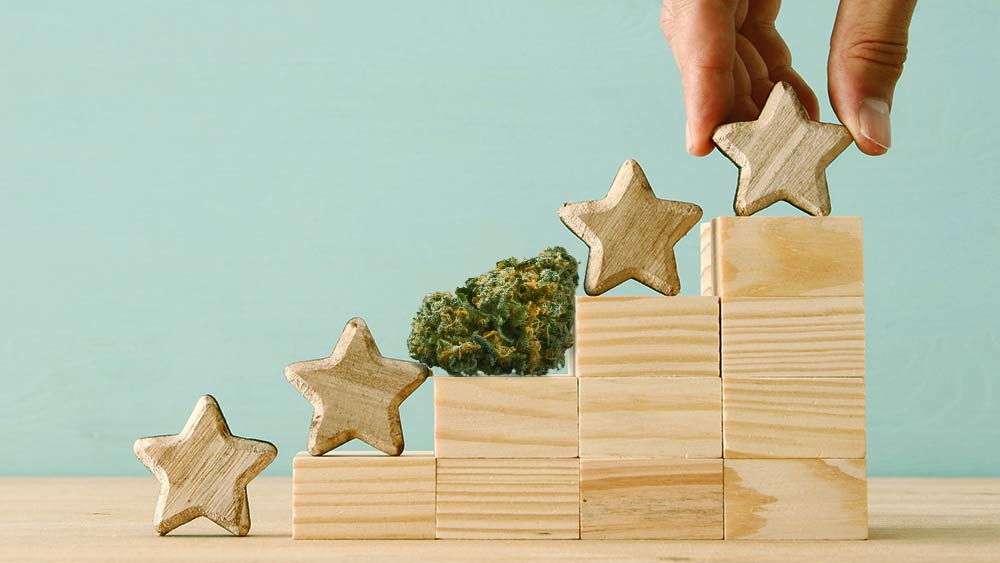One of the starting points in getting acquainted with cannabis is its classification.
According to some reputable sources, the scientific name of this plant species is cannabis sativa L, and its two known subspecies are indica and sativa.
However, not all scholars agree that there is a subspecies indica that is distinct from sativa. This dilemma makes it difficult to state with full certainty how many cannabis subspecies there are, some claiming there is only one, and some arguing that there are three.
Hemp is another stumbling block in cannabis nomenclature. It is actually the genus of all cannabis species, but there is also industrial hemp that is a variety of the sativa subspecies.
Industrial hemp differs from other sativa and indica varieties in that it has very low or zero levels of the intoxicating cannabinoid, THC.
Since cannabis experts are used to recognizing different cannabis strains by their dominant indica or sativa traits, we’ll accept that they are different subspecies. After all, they look differently and they grow in different geographical regions.
Sativa strains, for example, are naturally found in Colombia, Mexico, Jamaica, Thailand, Cambodia, Kongo, Kenya, Nepal, India, and other tropical and subtropical parts of our planet.
Characteristics of cannabis sativa
Over time, much like any other plant, the features of the sativa subspecies have evolved to differentiate themselves distinctly from other species.
In fact, to further control such unique features, breeders have crossed many sativa strains with other sativa or indica strains to either strengthen or combine certain characteristics.
Sativa plants are easy to spot with their main features bearing a height of up to 20 ft and having thin leaves.
Unlike indica strains, whose flowering period typically lasts about eight weeks, it takes up to twenty weeks for a sativa plant to flower.
This is usually a deal breaker when it comes to growing your own plants, especially for novice cultivators and indoor breeding.
On a chemical level, sativa strains have higher THC content and lower CBD levels compared to indica strains. With THC being the primary psychoactive substance of marijuana, sativa plants are generally preferred among pot users and growers alike.
Its uplifting high is perfect for all kinds of activities. It’ll rarely leave you feeling stoned and sleepy (effects often described by indica users).
Sativa is the top choice if you’re going to a party, want to mingle, or if you’re looking for a boost in your creative efforts, whether it be writing, painting, or drawing. It’ll often leave you feeling happy and inspired.
Best sativa strains to smoke (or eat) in 2019
Now that you’re a bit more familiar with their characteristics and benefits, here are our choices for best sativa strains in 2019.
Haze Berry
Haze Berry was created by Royal Queens Seeds from the Netherlands.
This strain is a cross between Blueberry and Super Silver Haze. It is a tall plant with long, thin leaves. Despite the dominance of sativa, flowers grow dense, in small clusters. Depending on the growing conditions, it may have purple hues on the leaves and buds.
It provides an energizing and smooth high through sweet flavor. After a while, the uplifting high turns into a relaxed stoned feeling due to its indica side.
- THC content: 20-22%
- CBD content: medium
- Type: sativa 80%, indica 20%
- Yield: 525-650 g/m2 per dried plant
- Flowering time: 9-11 weeks
- Harvest: October
Sour Diesel
This strain is equally popular with recreational and medical users because of its sativa-induced high and its indica-influenced relaxation afterwards.
Sour Diesel has yellowish leaves and medium-sized buds. The buds have a distinct smell that is similar to gasoline.
Unfortunately, its origins are unknown. It has been around for quite some time, and some believe it originated from a sativa strain called Diesel.
Sour Diesel is a potent strain, with THC levels up to 25%. Novice users or those with a low THC tolerance should be careful when consuming this bud.
There have been reports of Sour Diesel causing an overwhelming feeling that leads to paranoid thoughts, so be careful with this one.
- THC content: 20-25%
- CBD content: very low
- Type: sativa 80%, indica 20%
- Yield: 500-800 g/m2 per dried plant
- Flowering time: around 10 weeks
- Harvest: October (Northern Hemisphere) or April (Southern Hemisphere)
Durban Poison
Durban Poison is 100% sativa, and it originates from South Africa’s port city of Durban.
As to physical characteristics, it buds are medium to large, with a compact structure similar to indica strains. Its leaves are dark green, and its buds are covered with thick resin.
Due to strong genetics and resilience, Durban Poison is an excellent choice for new growers. It reaches 2-3 m in height and develops sturdy side branches. It reaches maturity between week 8 and 10, depending on whether it’s grown outdoors or indoors.
It’s known for its sweet anise smell and taste. Durban Poison provides an energizing, clear-headed cerebral effect, and it hits almost immediately. The high you get from this strain lasts about 3 hours and is especially great for giving your creativity a boost.
- THC content: 15-25%
- CBD content: very low
- Type: sativa 100%
- Yield: 350 g/m2 per dried plant
- Flowering time: 8-10 weeks
- Harvest: September/October
Strawberry Cough
This cross between Strawberry Fields and Haze won the title of Best Flower in the 2013 Cannabis Cup.
When it comes to looks, Strawberry Cough plants are medium-sized; their yellowish leaves sometimes have a violet shade to them. Buds typically have a conical shape.
Growing this strain is pretty easy since it’s resistant to diseases, mould, viruses and bacteria. All you need are some necessary gardening skills.
The strawberry taste and aroma make this sativa-dominant strain possibly the fruitiest pot you’ll ever try! This sweet strain hits you after about 15 minutes, and you’ll experience an endless amount of happiness with no signs of fatigue.
If you’re serious about your weed, you won’t won’t want to miss out. A strong berry smell remains in the room even after you’ve tightly tucked your stuff away.
- THC content: 15-20%
- CBD content: very low
- Type: sativa 85%, indica 15%
- Yield: 400-625 g/m2 per dried plant
- Flowering time: 9-10 weeks
- Harvest: October
Dance World
Dance World is a cross between Dancehall and Juanita La Lagrimosa (of Mexican and Afghani origin).
Although the strain is 75% sativa, the plants look more like indica: their height is between 60 and 90 cm, and they flower in about eight weeks. The smoke and taste are dominated by earthy and spicy flavors with a fruity undertone.
This sativa strain gives you an uplifting high. It’ll increase your productivity level and keep you positive. Dance World is also widely used for medicinal purposes. It relieves pain and spasms and chases all your concerns away. After about an hour, you’ll feel the energy hitting your brain. It’ll speed up your thinking.
We suggest you use it in the late afternoon. You’ll feel more ready for everyday activities like cleaning or grocery shopping.
- THC content: 14%
- CBD content: almost equal to THC content
- Type: sativa 75%, indica 25%
- Yield: 400-450 g/m2 per dried plant
- Flowering time: 8 weeks
- Harvest: early October
Maui Waui (or Maui Wowie)
Aloha to all cannabis lovers out there! This beautiful sativa strain originates from the island of Maui, from where it spread to all of the Hawaiian Islands and later to the rest of the world.
Maui Waui’s buds are light green with orange pistils sporting short, white hairs. The plants are usually 2 m high.
Its tropical, pineapple aroma fills you up with motivation and focus, allowing you to be creative and active.
This strain is also popular among growers because it’s highly resistant to pests and diseases. But keep in mind that, if you’re going to grow it outdoors, you need to do it in a warm tropical climate similar to its birthplace.
- THC content: 19%
- CBD content: very low
- Type: sativa 85%, indica 15%
- Yield: 350-450 g/m2 per dried plant
- Flowering time: 9-12 weeks
- Harvest: mid-October
Laughing Buddha
Another 100% sativa strain, Laughing Buddha is a cross between sativa strains originating from Thailand and Jamaica.
Laughing Buddha is a tall, bushy plant with buds all over it. The leaves are green and yellow, with a ragged texture.
Hints of lemon, ginger and pepper with a strong herbal aftertaste will inject all the power you need to perform any task. You’ll almost feel bubbly and ready for mixing. Laughing Buddha is widely used in coping with depression and for stress relief.
It’ll lift your mood and give you a happy feeling. You may imagine yourself relaxed and in a meditative state with a smile on your face.
- THC content: 20%
- CBD content: very low
- Type: sativa 100%
- Yield: 600 g/m2 per dried plant
- Flowering time: 10 weeks
- Harvest: mid to late October
Conclusion
If you’re a recreational cannabis user, sativa can be your best pal. It’ll help you get through the day, boost your energy and your creativeness. Also, many users agree that sativa strains reduce pain and stress.
All in all, we’ve gathered 7 of the best Sativa strains for 2019, so take your pick.
Have a nice high!









